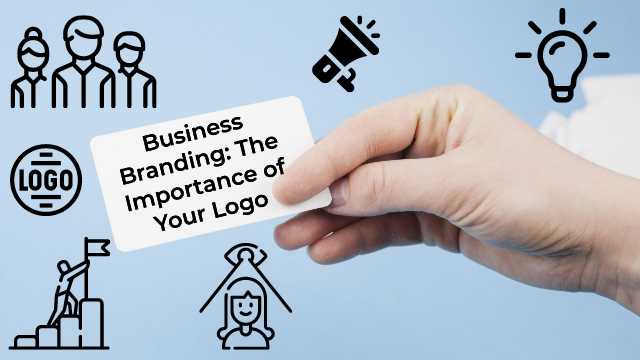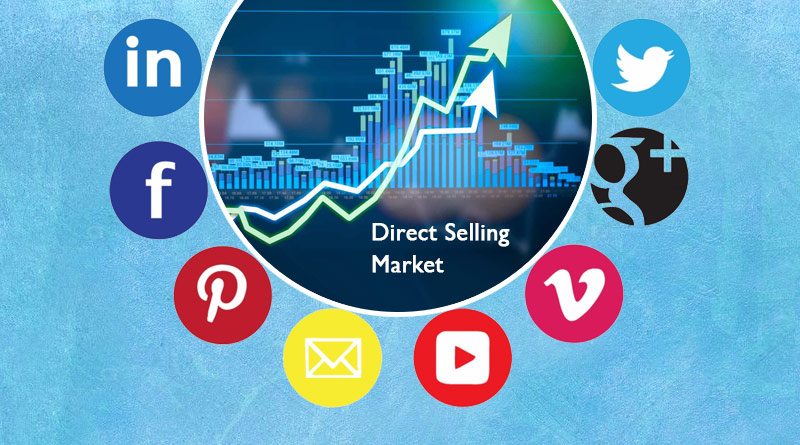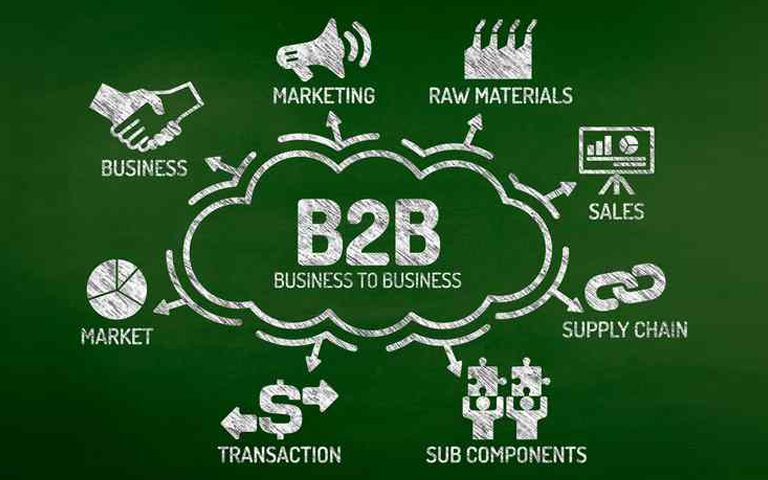Business Branding: The Importance of Your Logo
Posted: 20-07-2022

How important is branding in today's competitive environment? What does it mean for your company? Business branding is the process of creating a unique identity for your company or organization.
So, the goal of branding is to create a strong connection between customers and your company. This helps to build trust and loyalty, leading to increased sales.
In other words, it is the way companies identify themselves and distinguish their products from those of competitors. You can say the visual identity of a company.
A strong brand identity helps build customer loyalty and increase sales. Also, it also provides a clear message to customers and potential clients. If you want to stand out from competitors, you'll need a logo that reflects your values and vision.
More About Logos.
The logo is a symbol or mark that represents a company’s brand identity. A logo is often referred to as “the face of a business.” In today’s world, companies use their logos to represent themselves online, offline, and even on social media platforms.
Visualizing a company's brand through its logo is essential. It's the first thing customers see when learning about a brand. When they see a logo, they instantly know what kind of company it is.
The purpose of a logo is to make a strong impression on customers. It should be simple yet eye-catching. A good logo should have a clear message and tell a story. Make it memorable and easy to recognize.
A logo should be appropriate for the type of business you run. For example, if you sell clothing, your logo should look professional and upscale. If you sell food, your logo should be fun and playful.
There are many different types of logos, including:
- Typographic
- Pictorial
- Hybrid.
1.Typographic Logos.
Typographic logos consist of text and shapes. Pictorial logos use images instead of words. Hybrid logos combine both text and images. Typographic logos are the easiest type of logo to create. They are based on the shape of letters or numbers. There are two basic types of typographic logos:
- Monograms
- Logotypes.
Monograms.
Monograms are single-letter logos.
Logotypes
Logotypes are short phrases that represent a company's name.
2. Pictorial Logos.
Pictorial logos are harder to design than typographic logos. However, they are more visually appealing. They are based on images rather than text. There are three basic types of pictorial logos:
- Emblems
- Icons
- Symbols.
Emblems are small pictures that represent a company's brand. Icons are abstract images that represent a company's values. Symbols are objects that represent a company's products or services.
3. Hybrid Logos.
Hybrid logos combine both text and imagery. These logos are easier to design than either typographic or pictorial logos. They are based on a combination of text and images.
There are four basic types of hybrid logos:
- Wordmarks
- Mascots
- Taglines
- Slogans.
Wordmarks are logos that feature a company's name. Mascots are cartoon characters that represent a company's image. Taglines are short phrases that describe a company's products or values. Slogans are short statements that express a company's mission statement.
Logos are critical in establishing a company's identity and promoting its products and services to potential customers. If you don’t have a good logo, then you might miss out on opportunities. This is because potential customers will associate your company with its logo.
What is Business Branding?
Business branding is the key to success. In today's market, it's important to have a strong brand identity if you want to do well. This means creating a unique logo, color palette, and other visual elements that represent your company.
The process of giving your business a unique name. A brand is a promise to your customers about what they can expect from your company. Brands help people identify products and services and make buying decisions.
In order to build a strong brand, businesses need to have a clear vision and mission statement.
Vision.
What do you want your customers to think of you?
Mission.
How do you want to make money?
Brand Personality.
Who are you?
Branding Process.
How do you plan to get people to know who you are?
The first step in building a brand is to define what you stand for. As a business owner, your brand should be a reflection of who you are. Once you have defined these things, you can begin to develop your brand personality.
You may not even realize how much of your personality is already reflected in your brand. Don't believe me? Just consider whether you would buy something from someone else's business. Chances are, you wouldn't. As a result, take some time to reflect on your identity and the impression you want to make on the world.
After hearing the word brand, we often think of companies like Coca-Cola, Nike, Apple, or Starbucks. These companies have developed strong identities that consumers recognize and associate with them. Consumers know what to expect from these companies and how they should act.
Business branding is not just for businesses; brands are also applied to individuals. Individuals use their own personal brands to represent themselves to others. It is the creation of a unique identity for a business.
A company's brand is a collection of its customers:
- Values
- Beliefs
- Character quirks
- General impressions.
Brands are created to create a positive impression of a product or service. When you develop a brand for your business, you want to create something that makes your business stand out from competitors. You want to give potential clients confidence that your business is trustworthy and reliable.
Your brand should reflect who you are as a business owner and what you offer to your customers. There are many ways to develop a brand. One way is to start with a logo.
Logos are the first thing people notice when they encounter your business. A good logo tells people what your business does and gives them an idea of what kind of service they can expect.
Once you have a logo, you need to find a name for your business. Think about what your business is about before choosing a name. Make sure the name you choose is not already taken.
If you plan to sell items online, check to make sure that the domain name you purchase includes the word “online.” A slogan or tagline could be an effective way to describe your business.
A slogan is a catchphrase that encapsulates the essence of your company. A tagline is a longer sentence that summarizes your business. Taglines are great for marketing materials and websites.
Business branding is the act of developing a unique identity for your business. So, a brand is a symbol that represents who you are and what you do. Your brand should reflect your company's:
- Values
- Mission Statement
- Products
- Services
- Culture.
Always remember a brand is not just about how your product looks; it's about how people perceive your company. Customers should only think of your company in terms of your brand when considering doing business with you.
Branding is a combination of many different elements, including:
- Logo design
- Color scheme
- Tagline
- Website design
- Social media presence
- Advertising.
Each piece of your marketing strategy should work together to create a cohesive whole.
The second step in any branding project is to understand your audience. Who are your target clients? What do they need? How can you help them? You'll know exactly what kind of brand you want to build once you've answered these questions.
You'll need to decide if you're going to go with a corporate brand or a personal brand. Corporate brands tend to be more professional and formal, while personal brands are often more casual and fun.
Corporate brands are great for companies that sell products or services to businesses. These brands tend to be more serious and professional and are best suited for larger corporations.
Personal brands are great for individuals who sell their own products or services. These brands tend to look more casual and fun and are best suited to smaller businesses and entrepreneurs.
Furthermore, business branding is a long-term investment that requires careful planning and execution. If done correctly, it can increase sales, improve customer loyalty, and build trust.
It's possible that you already have an idea for a company name in mind if you're starting a new venture. Here are some tips to get started:
1. Start Small.
To build a brand, you need not spend a great deal of money. In fact, starting out with a simple logo and tagline is probably the best way to begin.
2. Keep It Simple.
Don't try to reinvent the wheel. Don't quit until you discover what works.
3. Make Sure It Stands Out.
Whether you choose a corporate or personal brand, make sure it's distinctive.
4. Be Consistent.
Consistency is key. If you change your logo or tagline frequently, customers won't trust your brand.
5. Use Visuals.
Visuals are powerful tools that can help tell your story. Good logos and taglines are worth their weight in gold! It is important to remember that your brand is only as good as its weakest link.
Make sure that each aspect of your brand works together to tell a consistent story. The goal of business branding is to convey a clear message about the company’s purpose, values, and mission.
Importance of Logo in Business Branding.
What message does your logo convey? Is it something that makes you stand out from the crowd, or is it something that you wish you had never created?
The importance of logo design has increased over the years. Today, logos play a vital role in brand identity. They are essential tools for businesses to promote their brands and services.
A logo is the face of your company. Also, it tells customers who you are, what you sell, and what you stand for. Your logo should reflect your values and culture.
Thus, logos are designed to communicate a company’s values, vision, mission, and goals. In addition, they also serve as a powerful tool to attract customers.
No doubt, digital marketing agency online are a crucial part of running a successful company. However, your logo is the first thing customers will see when they learn about your company.
Make an impactful first impression by using unique logo animations to draw attention to your brand. A company's logo serves as a visual representation of its brand identity.
Therefore, a logo should be unique and memorable. Logo designs should be simple yet eye-catching. It should be able to convey information about the product or service without being distracting. In addition, logos should be consistent across all marketing materials.
When it comes to business branding, there are two main types of companies: those that focus on their brand identity and logo designing. The second is those who don’t.
People's first impression of a company is its logo. It is often the only way to identify a business if they do not have any physical location. Therefore, it is critical to choose a logo that accurately reflects the company's image and personality.
Make one if you don't have one. Let’s discuss the importance of a logo for any brand:
1. Builds Reputation and Identity.
When a company has a good reputation, it's clear to all of its stakeholders, like customers, employees, business partners, and suppliers. People trust brands that are already well-known. Customers make a purchase from a company that they know has been successful and established for some time.
Most of the time, logos that work well only have one color and a picture. On the other hand, the font used to write your brand name could be a good fit for your business. Make sure that the color and design of your company's logo are the same on all of your marketing materials, such as emails, landing pages, packaging, business cards, and so on.
When a company has a strong brand identity, its brand image is better, which makes people respect the company more. If you need your business to do great, you need to build a strong sense of brand identity. The essential part of this process is the logo of your company.
2. Maintains Brand Loyalty.
It's important for buyers to have a sense of familiarity with their purchases. This business branding of your firm's logo will help to the perception that your organization is trustworthy and accessible as your brand grows in recognition.
Imagine that you're out shopping for workout gear and notice some Nike track pants with the swoosh on them; you're instantly eager to buy. Why? So that you know you'll be taken care of, Nike is a well-known and respected brand. Trust and brand loyalty are built on a solid foundation of a well-designed logo.
When coming up with ideas for a logo, it's important to keep in mind who the finished product will be for. There is a great chance that people to trust a company and stick with it if its logo is straightforward and easy to understand. Once people have a good impression of your business, they will actively look for you and look for your logo.
3. Attracts the Right Audience.
It is one of the company's key goals to attract more and more customers by using creative marketing strategies. The logo features prominently in advertising and is the core of any marketing strategy to attract target consumers.
How it all works is explained in the next paragraphs. Also, designing your company's brand identity is an important part of the process of building a successful organization.
As an example, if you use a certain color palette for your logo and branding, you are trying to convey a particular message. The color red indicates a brand that is loud, passionate, and new. Yellow, on the other hand, conveys a more upbeat and outgoing personality. For each group, a certain color resonates and draws people to your items.
The font and style of your company's logo can communicate a lot about your brand's personality and ideals. There are certain demographics you're trying to reach with it. A classic, simple typeface reflects a mature brand. A rounded typeface with gentle curves is better for a children's brand since it's lively and easygoing.
A thoughtfully created logo design that corresponds with your business branding. It may work wonders for attracting your target audience and standing out from the crowd.
4. Makes Your Brand Memorable.
People are interested in your brand for a wide range of personal and professional reasons. Two of the reasons why are that the products are of high quality and the prices are very fair. But the most important reason is that the logo of your company is so interesting to look at.
Because of your logo, it's hard for people to remember the name of your company. People should know what your company's logo stands for and, more importantly, how it makes them feel about your business just by looking at it.
People may not remember the name of your company (don't take it personally; it's human nature), but they will remember your brand as soon as they see your logo.
Because a memorable logo is visually appealing, it is more important for your business to have a memorable logo than just a memorable name.
5. Keeps a Business Ahead of Competition.
Each industry or product category has its own unique set of symbols. Consumers should instantly recognize your logo when they see it. Make sure that your logo is distinctive enough to stand out from competitors' logos.
With this in mind, how many pizzerias in your area feature an Italian chef with long white hair and an exaggerated smile on his face? It's possible they were holding a huge pizza. Logos that do both of these things are essential if you want to be noticed. If you want a memorable logo, don't be scared to stand out.
6. Enhances Professionalism.
A reputable and effective business must follow certain criteria. With these attributes, a company is more likely to acquire the trust of its customers and increase the possibility of a sale.
In order to emphasize a business branding's professionalism, the logo is as important as other elements. Sometimes, even more than that.
A professional logo shows that a business pays attention to detail in all of its operations and won't make corners on product quality. Customers want a respected corporation to have a suitable logo so it meets their standards and expectations.
But, if your company doesn't have a logo, potential customers might think it's not reliable or professional. Because of this, both your customers and your sales will suffer because you don't care about the well-being of other people and act unethically in business.
A good logo design is not just a pretty picture; it should communicate clearly what your business does and how it can benefit its clients. In order to make a great logo, you need to understand your target audience and their preferences. You should know what they want and how they perceive your product or service.
Key Takeaways.
The greatest method to wow your consumers right away is with a well-designed logo. It makes a great first impression and conveys a positive image of your company.
Logo Designing is a creative art that helps in branding your business. Also, a logo design is a symbol or mark that represents a company’s brand identity. When someone first sees your business, they will notice your logo. Your company's identity should be reflected in your logo. It should help customers identify your products and services easily.
Now you've developed your brand personality. You'll need to decide how you're going to get people to know about it. There are many ways to get the word out about your brand, including:
- Advertising
- Word-Of-Mouth
- Social media marketing.
Remember that it takes time to build a strong business branding. So, even if you have a good product, you can't be sure that people will start buying it. So, if you want to build a successful brand, you need to sell high-quality products at prices that people can afford.
People trust online reviews over any other type of advertisement. When people read a good review of a product, they are more likely to trust the reviewer and buy the product. But reading what others have given reviews about your brand is the best way to get the word out.
When a company's logo is well-designed, customers are more likely to feel like they can trust that company. Also, it helps people have a good impression of your business.





